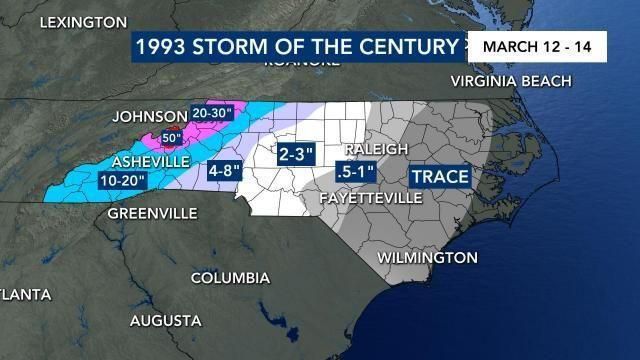The 1993 storm of the century brought 50 inches of snow, 93 mph winds to NC
This week marks the anniversary of the 1993 storm of the century.
The storm impacted North Carolina on March 13 after a low formed in the Gulf of Mexico on March 12. It raced to the northeast and intensified to bring wind, snow and even storm surge to our state.
The track covered more than 550,000 square miles, impacting nearly 120 million people. The storm closed every major airport on the east coast at one time or another during the duration of the storm.

Western North Carolina got hit hard with snow and wind. Central North Carolina had a little bit of snow and strong winds. Eastern North Carolina had strong winds and storm surge. The strongest wind gust was at Frying Pan Shoals at 93 mph.
That's the strength of a strong category 1 hurricane. Winds gusts as high as 55 mph were reported in Fayetteville and a 41 mph gust was recorded in Raleigh. The highest snow total was on Mount Mitchell at 50 inches. Snow remained on the ground there until April 12!

Only a trace of snow fell in Fayetteville; Raleigh-Durham International Airport recorded less than an inch (.9"). The North Carolina State Highway Patrol reported over 2,700 traffic accidents.
The storm caused approximately $5.5 billion in damages across the country. More than 200 hikers had to be rescued from the North Carolina and Tennessee mountains, according to the National Oceanic and Atmospheric Administration. About 200 homes along the Outer Banks were damaged.












